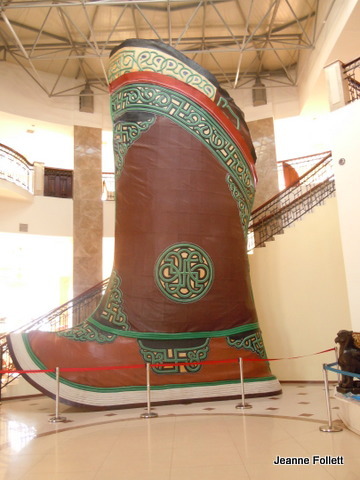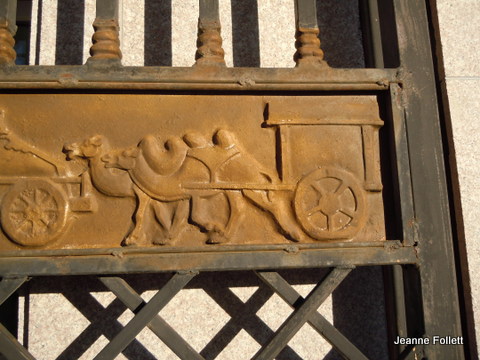“They called us barbarians,” my guide Yusef says, in a way
that suggests he is offended by the invective.
“When I think of the Mongols,” I reply, “I think of fearsome
warriors, not barbarians.”
 |
| Statue of a Mongolian warrior |
***
Remember Genghis Khan, that innovative (or barbaric, take
your pick) Mongol ruler whose armies conquered much of Asia, southern Russia,
the Middle East, and took a big bite out of Europe?
Turns out that wasn’t his name.
His name was Temujin.
When his father, the ruler of a clan of Mongols was killed, Temujin was
only 12, and the clansmen rejected the boy as their new leader, abandoning him
and his family to die in a semi-desert area.
Temujin fooled them all by not dying and by 20 was ruler of
the clan. His power increased over the
years as success followed success in warfare and at age 44 the Mongolian
council (kuriltai) formally acknowledged
Tumujin as the leader of all Mongols and the conquered countries.
It was then that Temujin took the honorific
Chinggis, westernized as Genghis.
 |
| Detail on statue. |
Today, it seems, everything is named after Chinggis
Khan. No matter where you look, that
name pops up. The airport, stores,
restaurants, everywhere, and there is talk of instituting laws regarding use of
the name to prevent trivialization.
They might be too late.
Though considered brutal by many historians, particularly
by those in conquered countries, he is also noted for his religious tolerance,
military system of meritocracy, enlarging trade between Christian Europe,
Muslim Southeast Asia, and China, and allowing the Silk Road to flourish. Mongolians consider him the founder of
Mongolia. The Mongols also set up a
system of communication that rivaled the Pony Express, with horse stations
every 50 km. It, however, spread from
Mongolia to eastern Europe, into Russia, and across the Middle East, wherever
the Mongol armies were.
So, out of UB on the first day of my tour with Yusef and
Aigii, where did we go for supper and to spend the night?
Why, the great statue Chinggis Khan, of course.
The statue of Chinggis Khan on horseback is to Mongolia as
the Eifel Tower is the France, the Statue of Liberty is to the U.S., the Great
Wall is to China, and the Taj Mahal is to India.
Located an hour and a half drive out of UB
(33 miles), if there aren’t too many cows on the road, your first glimpse of
the statue is the topmost part showing over a hill.
Soon the entire 131 foot high structure
comes into view.
 |
| At sunrise, the statue appears golden. |
Finished in 2008 and erected in sections, the statue is made
of 250 tons of stainless steel.
An
internal support system with an elevators and many stairs allows visitors to go
as high as the horse’s neck, then exit there onto a viewing platform on top of
the horse’s head.
The base of the statue has 36 columns, representing the 36
khans from Chinggis to Ligdan Khan (1588-1634).
It faces east, towards Chinggis Khan’s birthplace.
In a lower floor is an impressive museum of
Mongolia bronze age artifacts.
No photos
allowed.
 |
| The Khan's hand on a golden whip. According to legend, this location is where Chinggis Khan found a golden whip, considered a good omen. |
 |
| Falcon head on sword handle. The falcon is the symbol of ancient Mongol tribes, the national bird orf Mongolia today, and is considered to be the symbol of Mongolia. |











































Very impressive, very massive and very beautiful.
ReplyDeleteI love the photo of you with the statue of Chinggis Khan behind you. That is a keeper.
ReplyDeletePerhaps you'll write of your stay in a ger in a later post. I'd love to read more about that.
Great Job .. We feel like we are almost back there. Cap and Patti from Hong Kong ..
DeleteBack for a re-visit. Great Post .. I am amazed at the information you put into your posts. Smiles .. Patti and Cap ..
ReplyDelete